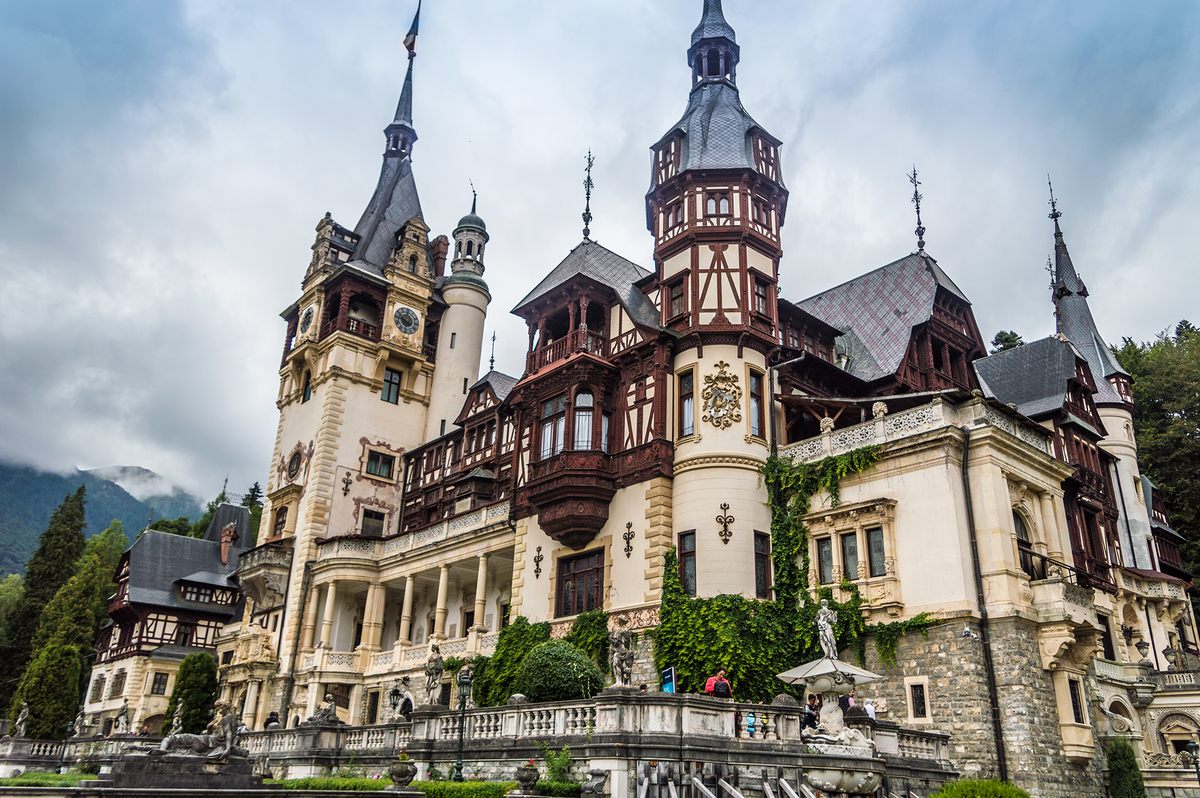Nestled in the foothills of the Bucegi Mountains, the elaborately decorated, fairytale-like Peles Castle is one of Europe’s most striking royal palaces. When King Carol I of Romania visited the small village of Sinaia in the 1860s, he was enchanted by the area’s scenic beauty. Captivated by the location, he commissioned the construction of a palace that would come to embody the grandeur of European architecture. The result is Peles Castle, a true masterpiece and one of the most stunning castles in all of Europe.

It took ten years to build Peles Castle, but in the end, the Romanian royal family had a lavish summer getaway, complete with modern touches like a movie theater and a concert hall. The palace, with its 160 rooms, was crafted in the Neo-Renaissance style, with each room having its own unique theme and design. After the castle was completed in 1883, King Carol I and his family started spending their summers there, enjoying the fairytale setting. The castle also hosted important meetings during the early stages of World War I.



King Carol I and Queen Elizabeth of Romania were the first royals to live in Peles Castle, and their distinct personalities are reflected in its design. King Carol I, a seasoned soldier with a deep interest in weaponry, filled the castle’s Weapons Room with an impressive collection of 4,000 pieces from Europe and Asia. On the other hand, Queen Elizabeth, who had a love for the arts, literature, and music, made sure the castle had a beautifully adorned movie theater, featuring frescoes by famous Austrian artists Gustav Klimt and Franz von Matsch. This theater is historically significant as it hosted Romania’s first movie screening. The castle also boasts a Music Room with intricately carved teak furniture, a gift from the Indian Maharajah of Kapurthala, where Queen Elizabeth would hold her cultural salons.

King Ferdinand, who followed King Carol I, built a smaller but equally refined palace called Pelișor right next to the grand Peles Castle. However, when Romania came under Communist rule, the state seized both Peles and Pelișor, along with other royal properties. Peles Castle was closed from 1975 to 1990, during which time the Romanian dictator Nicolae Ceaușescu considered turning it into a residence for official guests. Fortunately, the castle’s caretakers managed to prevent this by convincing Ceaușescu that a harmful fungus inside the castle would make it unsafe to live in. After the 1989 revolution, Peles Castle was reopened to the public as a museum, allowing visitors to once again experience its splendor.










